Legacy of Cello

From playing on cellos owned by Paganini to collaborating with Samuel Barber, Curtis cello faculty have always held a place of prominence and influence in the classical music world.
Even before Curtis opened its doors, the school’s leaders sought out players of international stature, exemplified by its very first cello teachers, Horace Britt and Michael Penha. Both hailed from the European conservatory tradition—Britt was educated at the Paris Conservatoire, and Penha at the Amsterdam Conservatoire—and were internationally regarded solo and chamber musicians. Other early faculty left a lasting imprint on the development of cello technique and pedagogy. Modern Method for the Violoncello by Stephen De’ak (’30) remains an unrivaled pedagogical resource about technique for players to this day. Emanuel Feuermann—who played, among many remarkable instruments, a Stradivarius previously owned by the acclaimed August-Joseph Franchomme, Frédéric Chopin’s preferred cellist—was revered for revolutionizing cello technique.
The cello faculty’s artistic relationships with pre-eminent composers have had a visible and lasting impact on the classical music world. Felix Salmond took part in the premieres of several significant works by Edward Elgar, including the Piano Quintet in A minor and the String Quartet in E minor. Salmond’s performance in the latter so impressed Elgar that he asked the cellist to give the premiere of his now-famous Cello Concerto in E minor. Salmond played the piece on an instrument made by Matteo Goffriller in Venice in 1700, which had once belonged to the collection of legendary violin virtuoso Niccolò Paganini. Orlando Cole (Cello and Chamber Music ’34) and Samuel Barber (Composition and Voice ’34) were classmates at Curtis. In addition to collaborating on pieces for the Curtis String Quartet, Cole—whom Barber affectionately called “Landy”—suggested revisions to Barber’s Cello Concerto after the premiere, which the composer incorporated into the final version.
The cello faculty’s enthusiasm for promoting new music continued unabated throughout the 20th century. In 1941 Gregor Piatigorsky premiered Paul Hindemith’s Cello Concerto, written for him. Piatigorsky—who taught Erling Bengtsson (’50)—also commissioned the Cello Concerto by William Walton and collaborated with Igor Stravinsky on a cello version of the Suite italienne from Pulcinella. Mstislav Rostropovich’s artistry similarly inspired compositional masters of the 20th century. Among the works written for Rostropovich were Sergei Prokofiev’s Cello Sonata in C, Op. 119 and Symphony-Concerto in E minor, Op. 125 (Sinfonia Concertante); Dmitri Shostakovich’s two cello concertos; Benjamin Britten’s Cello Sonata, three solo suites, and Cello Symphony; and countless other touchstones of the cello repertoire. David Soyer premiered Earle Brown’s avant-garde work Music for Cello and Piano with famed pianist David Tudor in 1955. And Salmond’s student, Leonard Rose (’39)—who taught Lynn Harrell (’63)—commissioned and recorded William Schuman’s A Song of Orpheus.
The rich history of these musicians is reflected today in Curtis’s current cello faculty, Peter Wiley (’74) and Carter Brey, who embody past faculty members’ values of artistic excellence and international influence. Brey has a tangible reminder of the legacy that he carries forward: he plays a Guadagnini cello made in Milan in 1754, and once owned by Michael Penha, one of Curtis’s first cello faculty members. Wiley and Brey currently guide and mentor thirteen Curtis cello students to be the next leaders in classical music, soon to join 181 living cello alumni working across the world as performers and teachers.
Faculty Timeline
-

Horace Britt
Cello — 1924-25 -

Michael Penha
Cello — 1924-25 -

Felix Salmond
Cello — 1925-43 -

Stephen De'ak
Cello — 1930-32 -

Orlando Cole
Cello — 1939-42, 1953-05 -
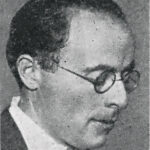
Emanuel Feuermann
Cello — 1941-42 -

Gregor Piatigorsky
Cello — 1942-51 -

Leonard Rose
Cello — 1951-63 -

Erling Bengtsson
Cello — 1951-53 -

David Soyer
Cello — 1968-10 -

Mstislav Rostropovich
Cello — 1990-95 -
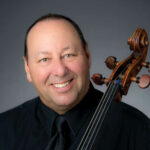
Peter Wiley
Cello — 1996-Present -

Lynn Harrell
Cello — 2001-02 -
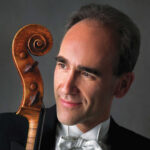
Carter Brey
Cello — 2009-Present -
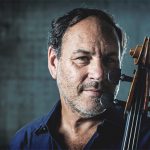
Gary Hoffman
Cello — 2021-Present -

Nicholas Canellakis
Cello — 2024-Present -

Yumi Kendall
Cello — 2024-Present -
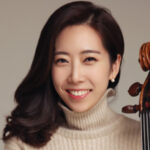
Christine Jeonghyoun Lee
Cello — 2024-Present
- 1925
- First Cello Alum
Louisa K. Miller
- 254
- Total Cello Alumni
How many names do you recognize on this list of Curtis cello alumni? View list
- 12
- Cello Studio
There are up to 12 cello students studying at Curtis in any given year.
Legacy of Curtis
Leading to its centennial year, Curtis began a multi-year project celebrating each of the school’s major areas of study.



